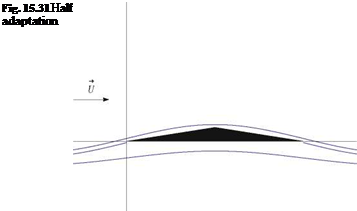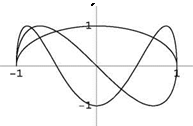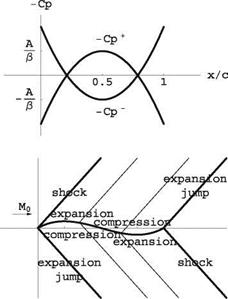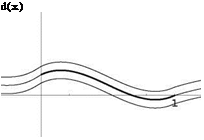Equilibrium of the AMAT2010
The AMAT10 has a rectangular main wing with span bm = 3.6 m and constant chord cxm = 0.35 m. The tail is also defined with a 33 % moving flap. The equilibrium code provides the aircraft characteristics and a maximum take-off mass M = 24 kg.
15.8.3.1 Airplane Aerodynamic Center and Static Margin
The equilibrium code calculates the lift and moment coefficients for the complete configuration at low incidences to be:
CL(a, tf) = 4.479a + 0.808tf + 0.9314
Cm, o (a, tf) = -1.469a – 0.7479tf – 0.1565
where a is the geometric incidence (in radians, measured from the fuselage axis) and tf is the tail flap setting angle (in radians). Cm, o is the aerodynamic moment about the origin of the coordinate system (located at the nose O). We will use this linear model for simplicity.
The center of gravity is located at xcg/lref = 0.268.
The aerodynamic center has been defined above. Using the change of moment formula, it has been shown that
The static margin SM in % of lref is
— – ^ = 0.328 – 0.268 = 0.06
lref lref
That represents a 6 % static margin.














 Cl (a)
Cl (a)
 Fig. 15.27 Pressure coefficients on the thin cambered plate at zero incidence
Fig. 15.27 Pressure coefficients on the thin cambered plate at zero incidence (‘Cm, o a_0 = d'(x) = (1 – 6£ + 6£2)£d£ = 0
(‘Cm, o a_0 = d'(x) = (1 – 6£ + 6£2)£d£ = 0
 Aerodynamic Coefficients
Aerodynamic Coefficients